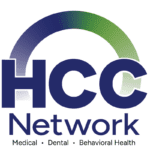Mental Health First Aid
Mental Health Facts and Figures
Did you know that 50 percent of mental health disorders present signs before a child turns 14 but less than 20 percent of youth receive the treatment they need?
Resources from YOUTH.GOV:
- Fifty percent of children and youth in the child welfare system have mental health disorders.
- Sixty-seven to 70 percent of youth in the juvenile justice system have a diagnosable mental health disorder.
- Eighty-eight percent of Latino children and youth have unmet mental health needs, compared to 77 percent for African-Americans and 76 percent for white children and youth.
- Thirty-one percent of white children and youth receive mental health services compared to 13 percent of children of color.
- Twenty percent of female Latino high school students seriously considered attempting suicide and 15.4 percent made a suicide plan, compared to 16.1 percent of white female high school students who considered it and 12.3 percent who made a suicide plan.
Help Spread the Word
Use the below information to post on social media:
- Suicide is the 10th leading cause of death in the U.S.
- Fifty percent of mental health disorders present signs before a child turns 14 but less than 20 percent of youth receive the treatment they need.
- People with severe mental illnesses are more than 10 times as likely to be victims of violence as those who do not suffer from a mental illness.
- People with mental illnesses can recover, much like people can recover from physical ailments.
- In 2010, there were an estimated 45.9 million adults (age 18 or older) in the US with a mental illness.
- Mental illnesses are more common than cancer, diabetes, or heart disease.
- More than 2/3 of Americans who have a mental illness live in the community and lead productive lives.
- Mental illnesses can affect people of any age, race, religion, or income. It is a medical condition that disrupts a person’s thinking, feeling, mood, and ability to relate to others and daily functioning.
- Serious mental illnesses include: major depression, schizophrenia, bipolar disorder, obsessive compulsive disorder (OCD), panic disorder, post-traumatic stress disorder (PTSD), and borderline personality disorder.
- 31.3 million adults (13.7 percent of the population) received mental health services during the past 12 months.
- Mental illness and intellectual disability are not the same. Mental illness affects a person’s thinking, mood, and behavior, whereas those with an intellectual disability experience limitations in intellectual function and difficulties with certain skills.
- Four of the 10 leading causes of disability in the U.S. and other developed countries are: mental disorders, which include bipolar disorder, schizophrenia, major depression, and obsessive-compulsive disorder.
- Between 70 and 90 percent of people with mental illnesses experience a significant reduction of symptoms and an improved quality of life, with proper care and treatment.
- Every year, as many as eight million Americans who have serious mental illnesses don’t receive adequate treatment.
- Mental health conditions are the second most reason employees miss work. And by 2020, major depressive illness will be the leading cause of disability in the world for women and children.
Other Resources
- Missouri Adolescent Mental Health Facts
- Prevalence of Mental Disorders Among Youth
- National Suicide Prevention Hotline: 1.800.273.8255
- National Suicide Prevention Hotline en Español: 1.888.628.9454
- Trevor Lifeline (For LGBTQ Youth) call: 866.488.7386; text ‘Trevor’ to 202.304.1200; or chat online
